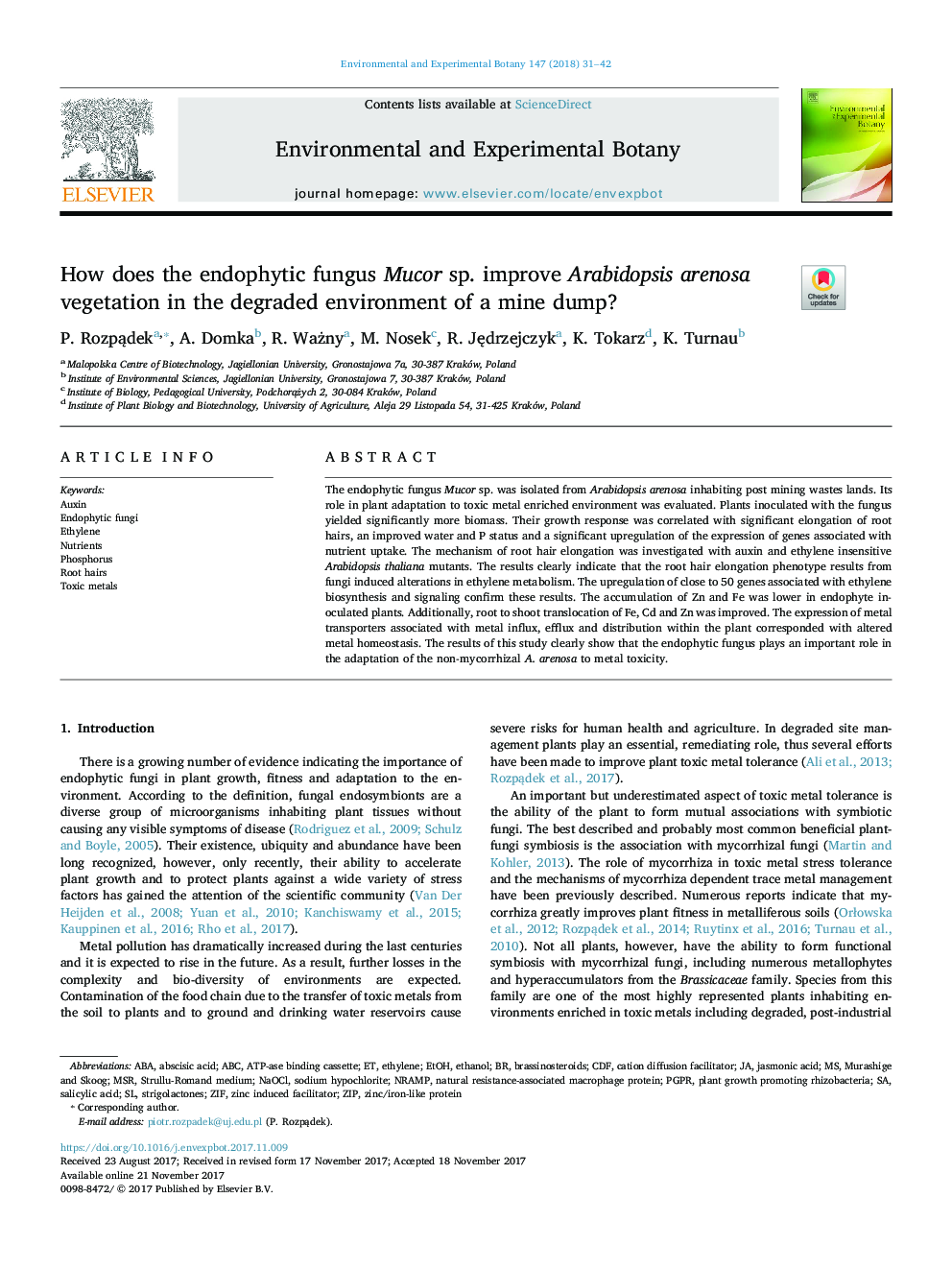| Article ID | Journal | Published Year | Pages | File Type |
|---|---|---|---|---|
| 8887082 | Environmental and Experimental Botany | 2018 | 12 Pages |
Abstract
The endophytic fungus Mucor sp. was isolated from Arabidopsis arenosa inhabiting post mining wastes lands. Its role in plant adaptation to toxic metal enriched environment was evaluated. Plants inoculated with the fungus yielded significantly more biomass. Their growth response was correlated with significant elongation of root hairs, an improved water and P status and a significant upregulation of the expression of genes associated with nutrient uptake. The mechanism of root hair elongation was investigated with auxin and ethylene insensitive Arabidopsis thaliana mutants. The results clearly indicate that the root hair elongation phenotype results from fungi induced alterations in ethylene metabolism. The upregulation of close to 50 genes associated with ethylene biosynthesis and signaling confirm these results. The accumulation of Zn and Fe was lower in endophyte inoculated plants. Additionally, root to shoot translocation of Fe, Cd and Zn was improved. The expression of metal transporters associated with metal influx, efflux and distribution within the plant corresponded with altered metal homeostasis. The results of this study clearly show that the endophytic fungus plays an important role in the adaptation of the non-mycorrhizal A. arenosa to metal toxicity.
Keywords
ABAStrigolactonesNaOClZIPABCPGPREtOHZIFMSRCDFMurashige and SkoogEthanolEthyleneabscisic acidjasmonic acidSalicylic acidAuxinBrassinosteroidscation diffusion facilitatorPlant growth promoting rhizobacteriaSodium hypochloritePhosphorusToxic metalsEndophytic fungiNutrientsRoot hairsnatural resistance-associated macrophage proteinNramp
Related Topics
Life Sciences
Agricultural and Biological Sciences
Ecology, Evolution, Behavior and Systematics
Authors
P. RozpÄ
dek, A. Domka, R. Ważny, M. Nosek, R. JÄdrzejczyk, K. Tokarz, K. Turnau,
